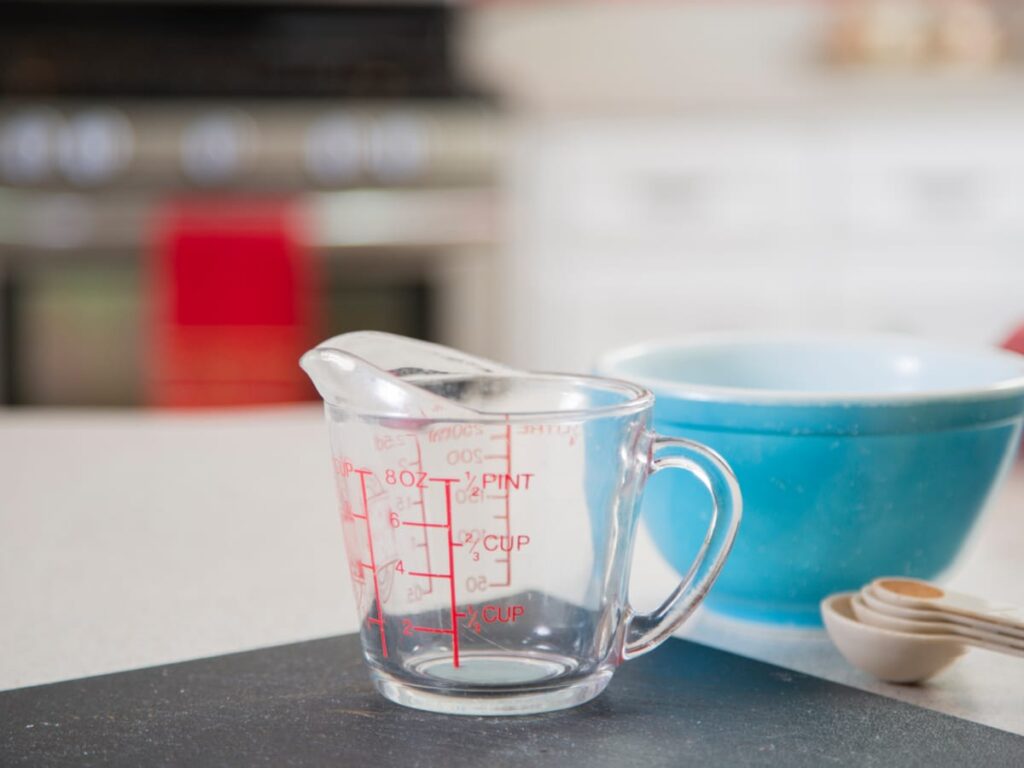Unveiling the Mysteries of Liquid Measurement: Unveiling the Secrets of Ounces and Cups
Have you ever stared at a recipe calling for buttermilk in cups while your grocery bag held a lone gallon jug? Or perhaps you’re mixing a delicious fruit punch for a party and need to convert cups to ounces for precise measurements. Fear not, for this comprehensive guide will untangle the complexities of liquid measurement and equip you with the knowledge to confidently navigate between ounces and cups.
Understanding Units of Volume: Ounces vs. Cups
Our journey begins by establishing a clear understanding of the fundamental units we’re dealing with: ounces and cups. Both are used to measure the volume of liquids, but they differ in size.
-
Ounce (oz): A unit of volume commonly used in the United States and some other countries. There are two main types of ounces to consider:
- Fluid Ounce (fl oz): The standard unit used for measuring liquids in the United States. It is equal to the volume of 1/16 of a US legal pint.
- Dry Ounce (oz): Used for measuring dry ingredients like flour or sugar. A dry ounce is slightly larger than a fluid ounce. This article focuses on fluid ounces (fl oz) as they pertain to liquid measurement.
-
Cup (c): Another unit commonly used for measuring liquids in the United States. While cups seem like a straightforward concept, there’s a catch: there are two different cup sizes!
- US Customary Cup (cup): The standard cup used in recipes and household measurements in the United States. It holds 8 fluid ounces (fl oz).
- Metric Cup (mL): Used in some countries and scientific contexts. A metric cup is equal to 250 milliliters (mL), which is slightly larger than a US customary cup.
Important Note: Throughout this article, we’ll focus on US customary cups (8 fl oz) and US fluid ounces (fl oz) unless otherwise specified.
The Conversion Formula: A Simple Key to Unlocking the Mystery
Now that we’ve identified the players, let’s unveil the formula for converting between ounces and cups. The beauty lies in its simplicity:
Number of Cups (c) = Number of Fluid Ounces (fl oz) / 8 fl oz/cup
This formula essentially divides the total number of fluid ounces by the number of fluid ounces in a US customary cup (which is 8).
Conversion Formula (alternative):
Number of Fluid Ounces (fl oz) = Number of Cups (c) * 8 fl oz/cup
This formula multiplies the number of cups by the number of fluid ounces in a cup to find the total number of fluid ounces.
Conversion Examples: Putting the Formula into Action
Let’s solidify our understanding with some practical examples:
-
Converting Cups to Ounces:
- You have a recipe that requires 2 cups of milk. How many ounces of milk do you need?
- Apply the formula: Number of Fluid Ounces (fl oz) = 2 cups * 8 fl oz/cup = 16 fl oz
- Therefore, you need 16 fluid ounces of milk.
- You have a recipe that requires 2 cups of milk. How many ounces of milk do you need?
-
Converting Ounces to Cups:
- A juice carton holds 64 fluid ounces. How many cups of juice does it contain?
- Apply the formula: Number of Cups (c) = 64 fl oz / 8 fl oz/cup = 8 cups
- The juice carton holds 8 cups of juice.
- A juice carton holds 64 fluid ounces. How many cups of juice does it contain?
Beyond the Basics: Additional Considerations
While the core conversion formula is straightforward, a few additional points deserve mention:
-
Rounding: In real-world scenarios, you might encounter measurements that don’t translate perfectly into whole numbers. It’s generally acceptable to round to the nearest appropriate unit depending on application. For example, if a recipe calls for 3.25 cups of broth, you can likely use 3 cups without significantly impacting the outcome.
-
Density: The conversion formula assumes we’re dealing with liquids with a density close to water. For significantly denser or lighter liquids, slight variations might occur. However, for most common household applications, the standard conversion will suffice.
-
International Considerations: The US uses the US customary cup (8 fl oz). If you’re working with recipes or measurements from other countries, you might encounter metric cups (250 mL). Double-check the type of cup being used to ensure accurate conversions.
Applications of Converting Between Ounces and Cups
Understanding the relationship between ounces and cups comes in handy in various situations:
- Cooking and Baking: Recipes often specify ingredients in cups or ounces.
-
Mixing Beverages: Party planning often involves large quantities of beverages. Converting between cups and ounces helps you determine how much of each ingredient you need to create the perfect amount of punch, lemonade, or mixed drinks.
-
Buying in Bulk: When purchasing liquids like milk, juice, or cleaning solutions in bulk, understanding ounce and cup conversions allows you to compare prices and determine the most cost-effective option for your needs.
-
Following Nutritional Information: Food labels often list nutritional information per serving, which might be given in ounces. Knowing how to convert to cups helps you compare serving sizes and calculate the total amount of a particular nutrient you’re consuming.
-
Dosage Measurement: Some medications, particularly for children, are measured in teaspoons or tablespoons. Understanding the relationship between ounces and cups can be helpful for converting these measurements, especially when using measuring spoons that don’t have markings for teaspoons or tablespoons.
Beyond Conversion: Tips for Mastering Liquid Measurement
-
Invest in a good quality measuring set: Having a set of measuring cups with clear markings in both cups and ounces, along with measuring spoons for smaller quantities, can significantly improve your measurement accuracy in the kitchen and beyond.
-
Label your containers: If you frequently store liquids in containers other than their original packaging, consider labeling them with the volume they hold in cups or ounces. This saves time and prevents confusion.
-
Practice makes perfect: The more you convert between ounces and cups, the more comfortable you’ll become with the process. Don’t hesitate to experiment with practice conversions to solidify your understanding.
By understanding the relationship between ounces and cups, along with the valuable tips provided, you’ve unlocked a valuable skill for navigating the world of liquid measurements. So, the next time a recipe calls for buttermilk in cups, or you’re planning a party that requires precise beverage measurements, you’ll be ready to tackle the task with confidence!
Frequently Asked Questions (FAQ) About Ounces and Cups
1. How many tablespoons are in a cup?
There are 16 tablespoons in a US customary cup (8 fl oz).
2. How many teaspoons are in a cup?
There are 48 teaspoons in a US customary cup (8 fl oz).
3. What if I don’t have a measuring cup with ounce markings?
No worries! You can improvise using readily available household items. Here’s a quick conversion guide:
- 1 cup = 8 fluid ounces (fl oz)
- 1 liter = approximately 33.8 fluid ounces (fl oz)
- 125 ml = approximately 1/2 cup (4 fl oz)
4. Are there online conversion tools available?
Absolutely! There are numerous online conversion calculators that can handle unit conversions between ounces, cups, liters, milliliters, and other volume units. These tools can be handy for quick conversions without memorizing formulas.
5. How can I ensure accurate measurements when cooking or baking?
- Use the appropriate measuring cups for the units specified in the recipe (cups or metric cups).
- Level off dry ingredients like flour or sugar with a straight edge to avoid using too much.
- For liquids, measure at eye level to avoid under- or overfilling the measuring cup.
By understanding the relationship between ounces and cups, employing these conversion tips, and practicing good measuring techniques, you’ll be well on your way to mastering liquid measurements in the kitchen and beyond.



